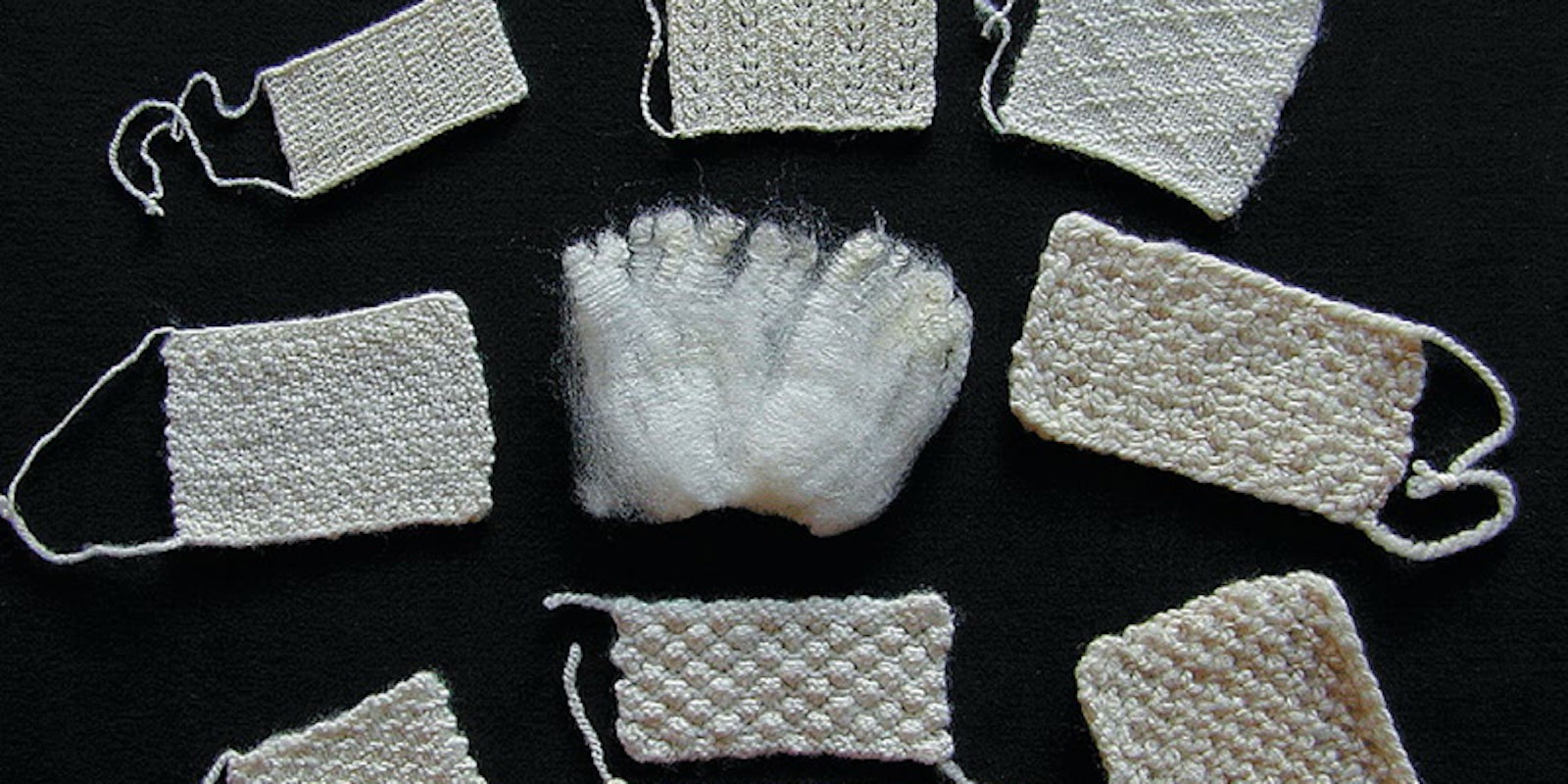There's pleasure in letting fiber slip through your fingers in that old familiar way, creating the yarn you've been mastering for years. But the longer you spin the yarn that feels most comfortable, the more difficult you may find it to make a new kind of yarn: a new weight, a new drafting method, a new way of holding your hands. A groove can so easily turn into a rut. Think of this collection of articles from past issues of Spin Off as not only your lifeline out of your well worn spinning path, but as a lab notebook for the most fun set of experiments you’ve ever tried. Try out these free handspun yarn techniques and see what you can spin.
In this free eBook, discover the numerous types of yarn you can create and the techniques and methods for spinning them. With the help from the editors at Interweave, you can continue to build on techniques and methods that work for the yarn you're trying to achieve when spinning.
What's Inside?
What Type of Yarn Do You Spin?

Worsted, Woolen, or Semi-Something By Rudy Amann Do you spin worsted or woolen yarn? Don't worry if you don't know—many spinners do not know the answer! They just continue spinning the same way they did for their first successful skein of yarn. The difference between worsted and woolen yarns comes from how the fibers are prepared for spinning, the drafting technique that is used, and how twist is allowed to enter the fibers. There is general agreement among spinners about how to spin true worsted yarns and true woolen yarns. However, most of us spin something between those two types of yarn.
Woolen vs. Worsted Spinning

Woolen/Worsted R.I.P By Rita Buchanan Often we fall back on jargon like woolen and worsted because we can't think of what else to say. Rita decided to stop focusing so much on the terminology and whether she was really achieving true worsted yarn or mastering a woolen draw. When she did, she also developed a richer vocabulary for the wonderful diversity of yarns and although she's not certain it's improved her handspun yarn, it has changed her state of mind.
Spin Yarn that Pleases and Suits Your Purposes

Drafting Techniques By Jeannine Bakriges Jeannine shares techniques for both short draw and long draw spinning. She particularly likes short draws for spinning slippery fibers such as silk, but for her, neither short forward nor short backward draw has a particular advantage—it's whatever works best at a given moment with given materials. She also uncovers her favorite words of advice from her spinning peers and mentors on drafting for long draw.
Worsted Spinning

The Short Draw Drafting for Worsted Yarn By Carol Huebscher Rhoades Carol Rhoades demonstrates the long-draw drafting technique to make a woolen yarn. She prepares for worsted spinning by dividing the top into manageable strips. Worsted spinning makes a smooth, dense, and lustrous yarn, with the fibers lying parallel to each other along the yarn's length. While you can use the short draw for short or long fibers, industry uses staples three inches or longer for worsted yarns.
Woolen Spinning

The Long Draw Drafting for Woolen Yarn By Carol Huebscher Rhoades Carol Rhoades demonstrates the long-draw drafting technique to make a woolen yarn. Woolen spinning makes a lofty, insulating yarn, with long and short fibers intersecting randomly to create air pockets. Think light and airy throughout the process of making a woolen yarn.
Yarn Standard Chart

The Craft Yarn Council has worked with fiber, needle, and hook manufacturers and publishers to set up a series of guidelines and symbols to bring uniformity to patterns and to yarn, needle, and hook labeling.
Learn more about yarn weights and essential fiber preparation methods for short draw and long draw spinning. Determine the ideal type of yarn you’d like for your next project and spin it today with guidance from this free handspun yarn eBook!
Note:On page 13 of the original eBook, the photo for step 3 was labeled incorrectly. The file was updated on December 18, 2012. While we work hard to avoid errors, sometimes something gets past us. We apologize for any inconvenience this might have caused.

